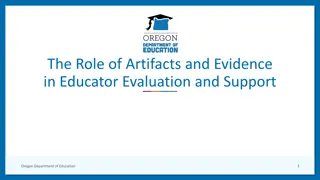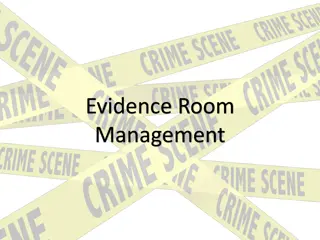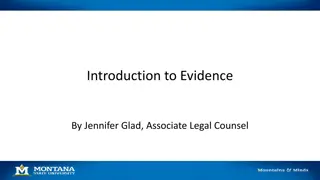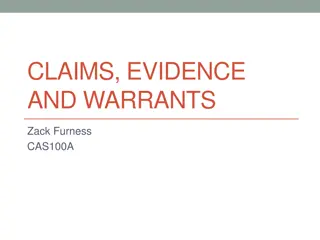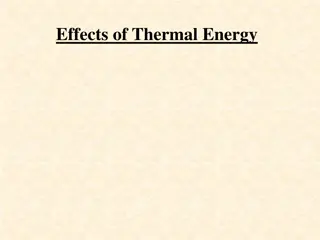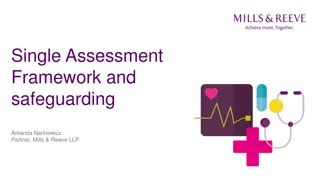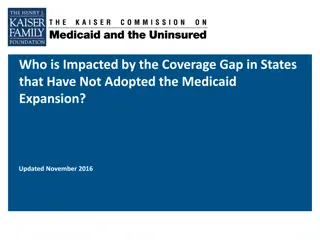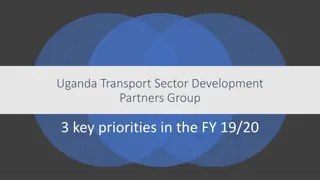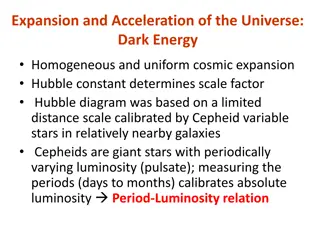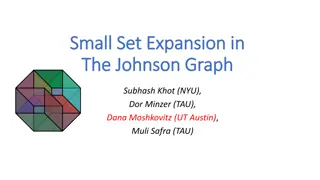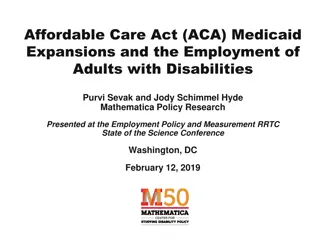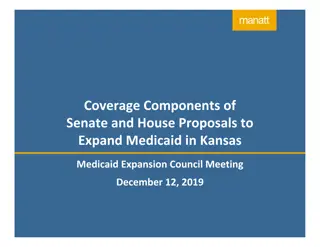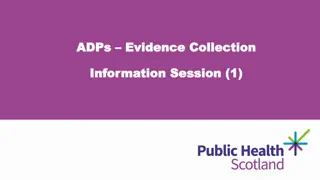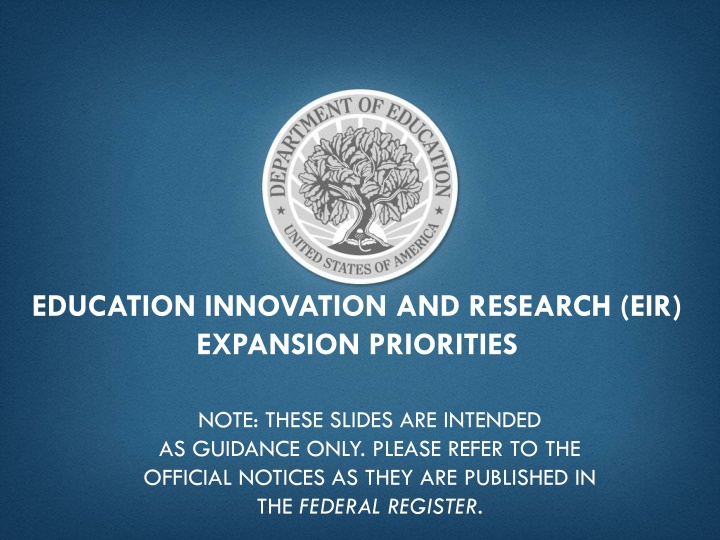
Expansion Priorities in Education Innovation and Research (EIR)
Explore the absolute priorities and key concepts related to the expansion of Education Innovation and Research (EIR) funding. Learn about the importance of strong evidence and field-initiated innovations in improving student achievement for high-need individuals. Get insights into what constitutes strong evidence and how it influences project funding decisions.
Download Presentation

Please find below an Image/Link to download the presentation.
The content on the website is provided AS IS for your information and personal use only. It may not be sold, licensed, or shared on other websites without obtaining consent from the author. If you encounter any issues during the download, it is possible that the publisher has removed the file from their server.
You are allowed to download the files provided on this website for personal or commercial use, subject to the condition that they are used lawfully. All files are the property of their respective owners.
The content on the website is provided AS IS for your information and personal use only. It may not be sold, licensed, or shared on other websites without obtaining consent from the author.
E N D
Presentation Transcript
EDUCATION INNOVATION AND RESEARCH (EIR) EXPANSION PRIORITIES NOTE: THESE SLIDES ARE INTENDED AS GUIDANCE ONLY. PLEASE REFER TO THE OFFICIAL NOTICES AS THEY ARE PUBLISHED IN THE FEDERAL REGISTER.
EXPANSION PRIORITIES Absolute Priority 1: Strong Evidence Absolute Priority 2: Field-Initiated Innovations General To create and take to scale entrepreneurial, evidence-based, field-initiated innovations to improve student achievement and attainment for high-need students All Expansion applicants must address both absolute priorities. 2
EXPANSION ABSOLUTE PRIORITY 1: Absolute Priority 1 Strong Evidence. Under this priority, we provide funding to projects supported by strong evidence. 3
EXPANSION ABSOLUTE PRIORITY 2: FIELD-INITIATED INNOVATIONS GENERAL Under the priority, we provide funding to projects that are designed to create, develop, implement, replicate, or take to scale entrepreneurial, evidence-based, field-initiated innovations to improve student achievement and attainment for high-need students. 4
WHAT IS STRONG EVIDENCE? (1 OF 2) Strong evidence means that there is evidence of the effectiveness of a key project component in improving a relevant outcome for a sample that overlaps with the populations and settings proposed to receive that component, based on a relevant finding from one of the following: (i) A practice guide prepared by the WWC using version 2.1, 3.0, 4.0, or 4.1 of the WWC Handbooks reporting a strong evidence base for the corresponding practice guide recommendation; (ii) An intervention report prepared by the WWC using version 2.1, 3.0, 4.0, or 4.1 of the WWC Handbooks reporting a positive effect on a relevant outcome based on a medium to large extent of evidence, with no reporting of a negative effect or potentially negative effect on a relevant outcome; or (continued) 5
WHAT IS STRONG EVIDENCE? (2 OF 2) (iii) A single experimental study (as defined in this notice) reviewed and reported by the WWC using version 2.1, 3.0, 4.0, or 4,1 of the WWC Handbook, or otherwise assessed by the Department using version 3.0 of the WWC Handbook, as appropriate, and (A) Meets WWC standards without reservations; (B) Includes at least one statistically significant and positive (i.e., favorable) effect on a relevant outcome; (C) Includes no overriding statistically significant and negative effects on relevant outcomes reported in the study or in a corresponding WWC intervention report prepared under version 2.1, 3.0, 4.0, or 4.1 of the WWC Handbooks; and (D) Is based on a sample from more than one site (e.g., States, counties, cities, school districts, or postsecondary campuses) and includes at least 350 students or other individuals across sites. Multiple studies of the same project component that each meet requirements in paragraphs (iii)(A), (B), and (C) of this definition may together satisfy this requirement. 6
HOW DO YOU DEMONSTRATE THAT YOU MEET STRONG EVIDENCE? Use the evidence form that is included in the application package Identify up to 4 study citations to be reviewed against the WWC handbook, and for each include a description of: The positive student outcomes to be replicated, and a description of how the characteristics of the students in the study correspond to those high needs students proposed in the application how the proposed practices correspond between the study and the proposed application the intended student outcomes that the proposed practice(s) attempts to impact Citations must refer to publicly available sources (provide links or other guidance) Applicants will not get an opportunity to provide additional information; however, study authors may be asked by the WWC to respond to queries on key aspects of the study design. 7
CONSIDERATIONS FOR SELECTING EVIDENCE Is it an experimental study? Is there a finding that is relevant to a proposed practice of your project? Does the cited finding examine the relationship between a practice and a student outcome or other relevant outcome. Is the cited finding based on a large sample? Is the cited finding based on a multi-site sample? Does the sample for the cited finding overlap with a population and setting for your proposed project? Is the cited finding a statistically significant and positive effect? 10
WHAT WORKS CLEARINGHOUSE In reviewing potential sources of moderate evidence, you might first review the What Works Clearinghouse to determine if there is an intervention report, practice guide, or individual study that has already been reviewed. Institute of Education Sciences Finding Evidence on What Works Clearinghouse Webinar is a helpful resource. o Tier 1 studies have the potential to meet the strong evidence definition. Tier 2, Tier 3, and Tier 4 studies will NOT meet the strong evidence definition. The Department will use Study Review Protocol Version 4.1 to conduct new evidence reviews. 11
REMINDER: EXPANSION GRANTEES ARE ENCOURAGED TO SCALE TO A NATIONAL LEVEL National level describes the level of scope or effectiveness of a process, product, strategy, or practice that is able to be effective ..in a wide variety of communities, including rural and urban areas, as well as with different groups (e.g., economically disadvantaged, racial and ethnic groups, migrant populations, individuals with disabilities, English learners, and individuals of each gender). Resource for consideration: Scaling up Evidence-Based Practices: Strategies from Investing in Innovation 12
EDUCATION INNOVATION AND RESEARCH (EIR) EXPANSION PRIORITIES NOTE: THESE SLIDES ARE INTENDED AS GUIDANCE ONLY. PLEASE REFER TO THE OFFICIAL NOTICES AS THEY ARE PUBLISHED IN THE FEDERAL REGISTER.

